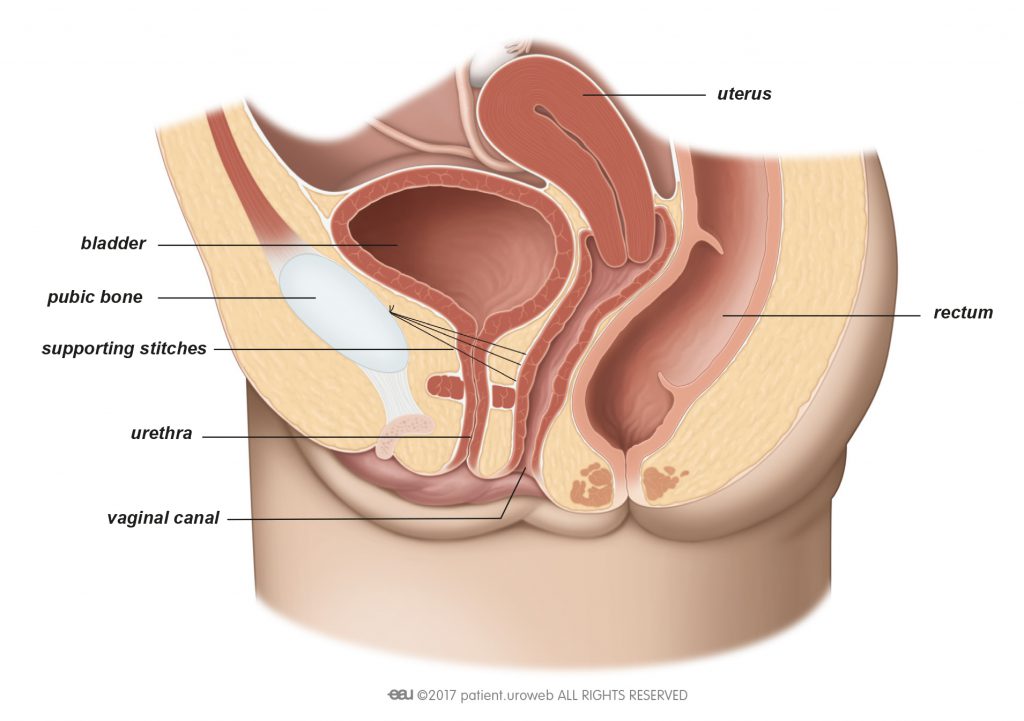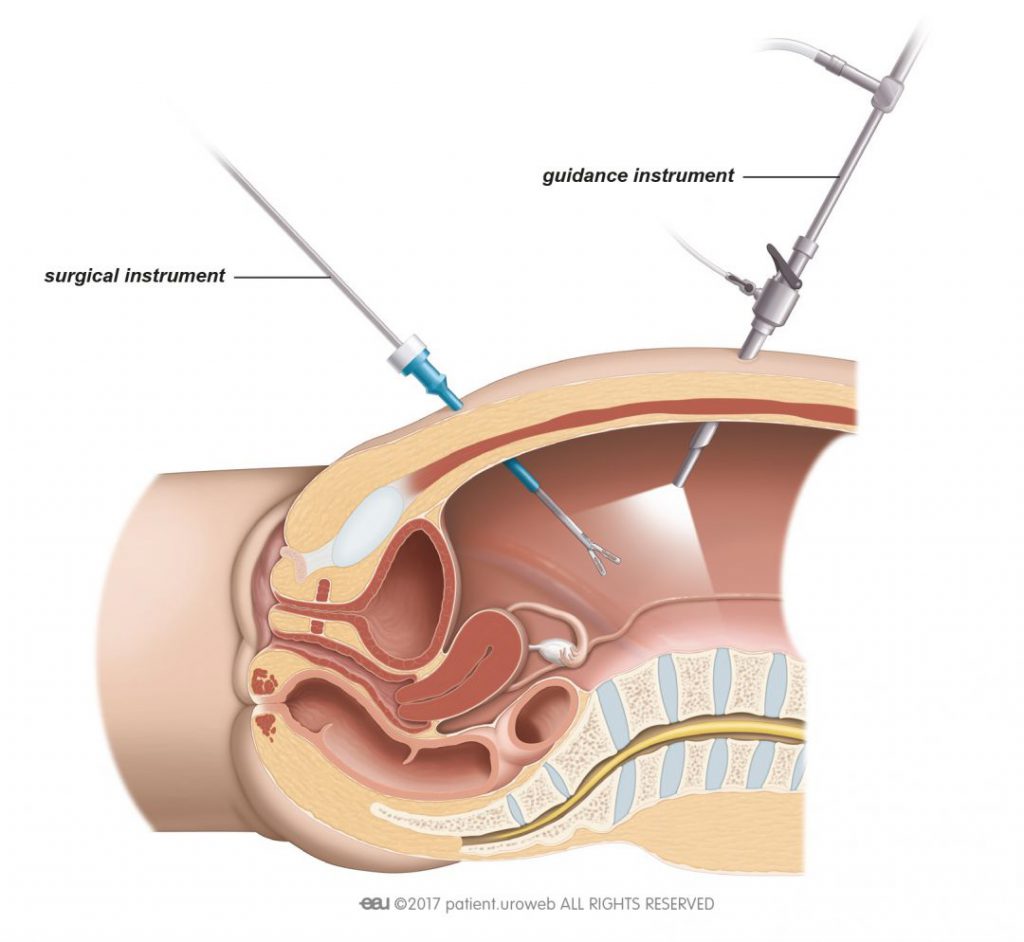Burch colposuspension procedures were commonly used to treat stress incontinence before the invention of midurethral slings. These days, slings have largely replaced Burch colposuspension because it is more straightforward to insert a sling and is a smaller operation. If a midurethral sling is not an option for you, your doctor may suggest that you have a Burch colposuspension, as an alternative. It can also be offered to you if you have previously had a different type of surgery for your stress incontinence, that wasn’t successful.
During Burch colposuspension surgery, the surgeon attaches the side of the vagina to the ligament behind the pubic bone with stitches, so that the bladder neck lies in a hammock. This lifts and supports the bladder neck, strengthening it against collapse and resulting in less bouts of urinary leakage.
The surgery can be done in one of two ways:
- Open surgery, where the surgeon makes a larger incision (cut) into your lower abdomen to access the bladder; or
- Laparoscopic surgery, where the surgeon makes a number of small cuts to get to the abdomen. A small camera is then inserted into the area, so the surgeon has a high-quality view on a video monitor to guide them while they are carrying out the surgery.
Both surgical methods are equally effective, but laparoscopic surgery usually involves a shorter hospital stay because small wounds usually heal more quickly.



